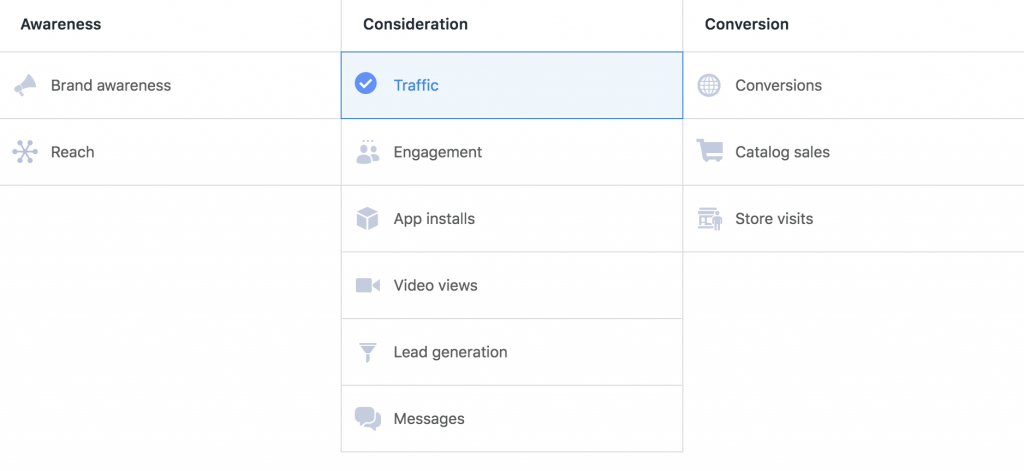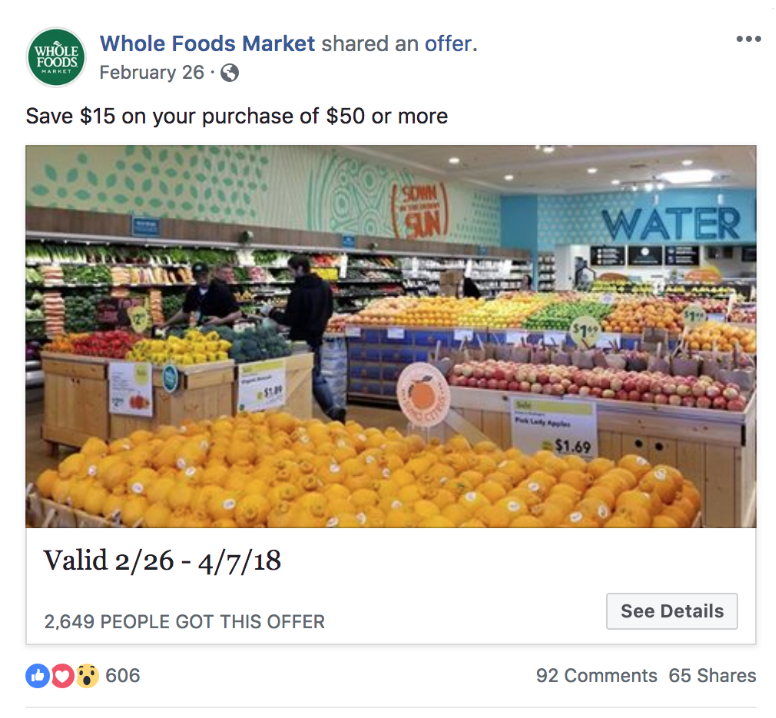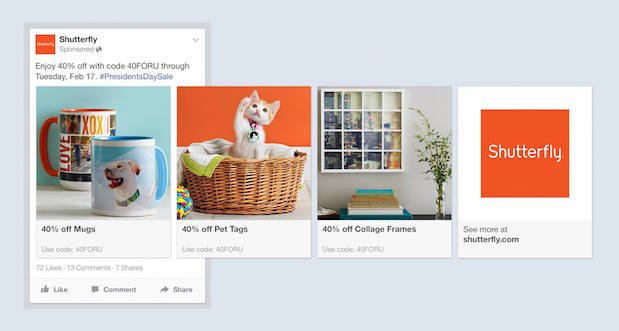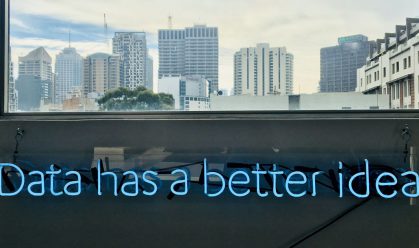Chances are that your business is already using Facebook as a paid social channel. According to a 2018 report on the industry, 72% of marketers use Facebook Ads, and 67% plan on increasing their use of Facebook ads over the next 12 months. The Facebook Ads Manager is a complex platform and understanding it is key to getting results for your company.
Read on for our top 9 tips to maximize the impact of your Facebook advertising campaigns.
1. Choose the Right Objective for Your Facebook Advertising Campaign
The first step to setting up your campaign for success is identifying the right objective. An advertising objective is what you want viewers to do when they see your ad. Facebook offers 11 objectives to choose from. The objectives fall into these categories: Awareness, Consideration, and Conversion.

Facebook Advertising Objectives
For example, if your goal is to get people to learn about your business, choose an objective that falls into the awareness category. These options include brand awareness and reach. Depending on your choice, Facebook will show your ads to an audience that is most likely to recall it later (brand awareness) or show the campaign to the greatest number of different people (reach).
Facebook changes the way it optimizes and delivers campaigns based on the chosen objectives, so it’s important to get this step right.
Different types of creative work best with certain objectives. Video ads are great for reaching more people, engaging your audience, and promoting video views. Carousel ads offer the ability to show up to 10 images, all with their own link, which makes them great for driving traffic to an e-commerce site.
If you aren’t sure what objective to choose for your next campaign, here is a helpful guide from Facebook.
2. Define Your Target Audience Starting with Customers You Already Have
While you can use Facebook’s data to target your ads to almost anyone, the best place to start is often with your own customers. Here are three ways for building audiences based on the customers you already have:
- Install the Facebook Pixel and create a custom website audience. The Facebook Pixel tracks your website traffic. You can create an audience of these visitors that updates as new people come to your site and send them retargeting ads later.
- Create a Customer File Audience. Uploading an export your CRM list is the most direct way to reach your current customers. Use this audience to speak directly to current customers in your ads.
- Begin to prospect by creating a Lookalike Audience using your custom audiences from your website or CRM list as the source.
3. Incorporate Social Proof into Your Facebook Advertising
Social proof is an old idea that is important to the success of social media ads. It also reduces the workload involved in creating those ads – win-win!
When creating new ads, a great place to start is repurposing your top performing organic content. By creating an ad from an existing post, you can preserve your engagement stats (likes, comments, and shares). These engagement stats work to improve the relevance score of an ad, ultimately driving down cost.
Another popular way to capitalize on the benefit of social proof is to feature customer reviews or testimonials in ad copy. The example below from Pawstruck leverages the carousel ad to highlight a few different to-the-point customer reviews, showcasing the popularity of their product.

Pawstruck using social proof
4. Use Influencers to Maximize Reach
Influencers are another important strategy when it comes to capitalizing on social proof. Seventy-four percent of people use their social networks to find advice and get recommendations before they buy. Forty percent of people have bought something after an influencer promoted it on social media. To attract the right audience, identify influencer partners that have strong ties within your industry and resonate with your brand. (Here’s a great rundown on social media influencers and how to find the right ones!)
Another reason to consider using influencers in your campaigns is that Facebook is investing heavily in this channel. They recently announced the new Brands Collab Manager, which is a tool to help brands identify and partner with influencers on campaigns. Here’s a peek at what that dashboard looks like:

FB Brand Collab Manager
5. Add Incentives to Your Campaigns
Facebook users have a lot of options, so the value proposition included in your Facebook Advertising has to be compelling. Make clear what your offer is and why the user would want it.
One way to do this is by including the offer in the post headline or in the image (although be careful of image text restrictions). This ad by The New Yorker uses a bold color and the offer: “12 weeks for $6”, sweetening the deal by adding in a limited-edition tote bag.

New Yorker FB Ad
Another way is to create an offer ad. An offer ad reduces friction by allowing them to redeem the offer within Facebook. You can also set up your offers for online or in-store redemption. Whole Foods Market uses offer ads to encourage customers to shop in-store with limited time Facebook offers.

Whole Foods FB Offer Ad
6. Monitor Performance and Adjust Facebook Advertising Campaigns in Real Time
The best ads managers are making daily optimizations to campaigns.
The relevance score estimates how well your ad is resonating with the people you want to reach. The higher your ad’s relevance score, the better it’s considered to be performing. If the relevance score is low, try refreshing creative, getting more specific with your audience targeting, or tweaking your copy.
Frequency is the average time a person sees your ad in their newsfeed. This number is an estimate, determined by budget, audience size, and schedule. Frequency can help to improve ad recall, but it can also cause a user to experience ad fatigue. Monitor your frequency against the overall performance of the ad and make adjustments if you see performance dropping.
One way to automate monitoring your ads is to set up ad optimization rules. Another is to compare your results against industry-specific benchmarks.
7. Scale Smart
When an ad is performing well, marketers often want to increase the budget to scale those results. However, the budget isn’t the only area where you should make changes. Simply increasing budget will show the ad to the same audience more often, increasing the chances of reaching ad fatigue.
Scaling a campaign is a complex process that causes a lot of marketers to fail, but can be extremely effective when done well! Some areas to think about making adjustments include:
- Targeting expansion: building new lookalike audiences to add to your campaign
- Test new creative and retarget those who didn’t convert with a fresh message
- Increase budget, but only after you have optimized audience and ad creative
8. Optimize for Mobile Viewing
It’s projected that mobile purchases will make up 40% of all e-commerce purchases in 2018. Mobile also accounts for nearly 80% of time spent on social media networks. With statistics like these, there are a lot of good reasons to show your ads on mobile devices.
The user experience is important to driving conversions on mobile. Shutterfly uses carousel ad with three unique links, all going directly to the category promoted in the ad. This reduces the amount of searching a customer needs to do on their mobile website.

Shutterfly FB ad
Before launching your campaign, think through the landing experience on your page. Is your landing page a recognizable extension of your Facebook Ad? Does it provide the info promised in your ad?
9. Think Long Term
The main difference between advertising on Google and Facebook is that people on Google are actively searching for something to buy. Facebook visitors, on the other hand, are in browse mode when they see your ad. Don’t make the mistake of expecting audiences to convert on the first try.
The best Facebook ad campaigns are long term strategies that reinforce the brand at every step of the purchasing funnel. Set up ads for awareness, consideration and conversion and nurture custom audiences over time. This guide takes a deep dive into setting up Facebook ads sales funnels.
It’s estimated that Facebook will generate $21.57 billion in US ad revenues in 2018. If that number is reached, it will account for 83% of the total social media ad spend throughout the nation. For marketers using Facebook for business, it is critical to develop an advertising strategy and nurture a strong understanding of the Ads Manager platform.
These 9 tips can help you to make the most out of your campaigns. What other tips have you found to help the success of your Facebook Advertising?
Some other Facebook resources you might find helpful:
- 10 easy ways to optimize your Facebook Business Page
- 16 stellar examples of high-converting Facebook Ads
- How to plan a successful Facebook Live Campaign
Benefit from in-person social media strategy workshops and case studies.
Our social media strategy conferences feature a line-up of top brands, sharing their processes and best practices for creating a top-notch social media presence.









